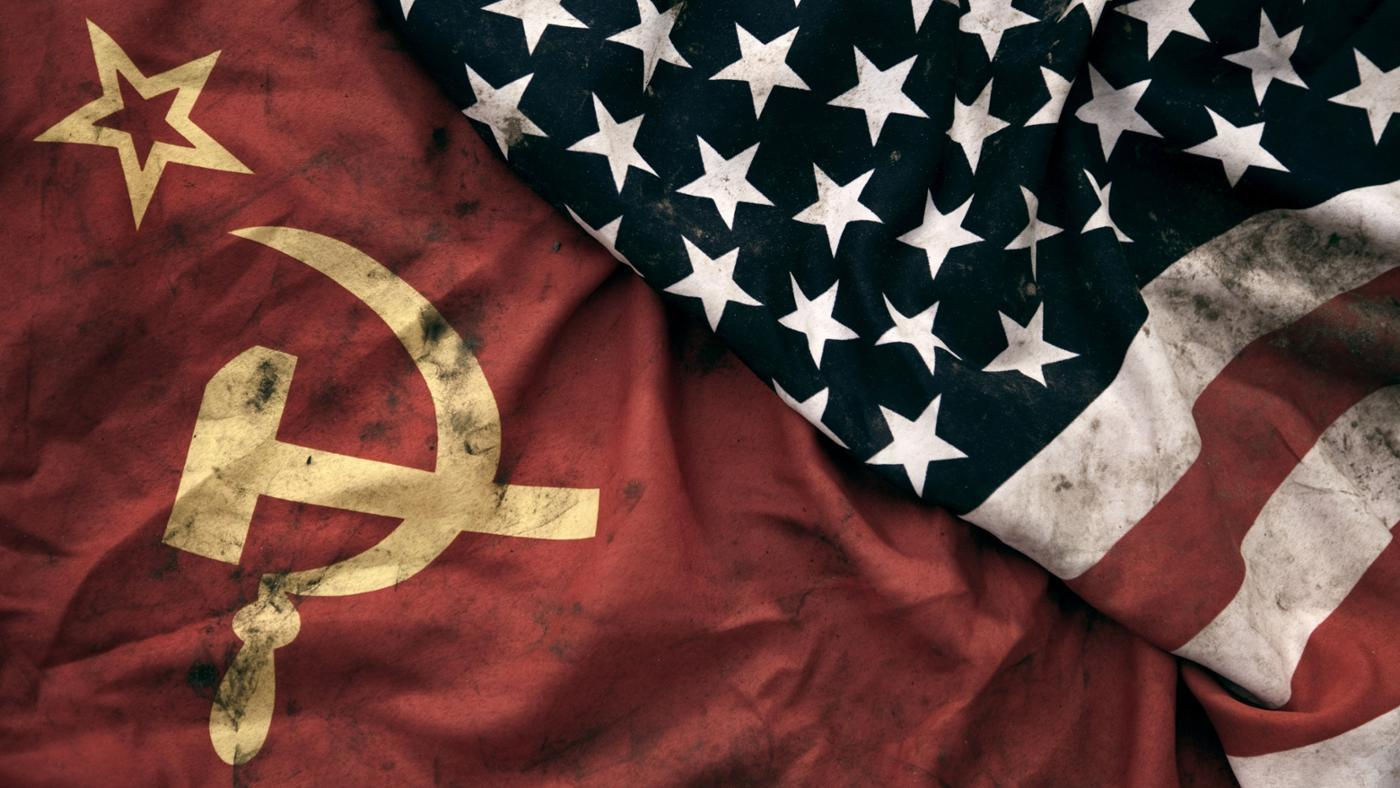
The Korean War
The Korean War was a conflict between the Democratic People's Republic of Korea, or North Korea, and the Republic of Korea, or South Korea. The war took place from 25 Jun 1950 – 27 Jul 1953. It was the first open conflict of the Cold War.
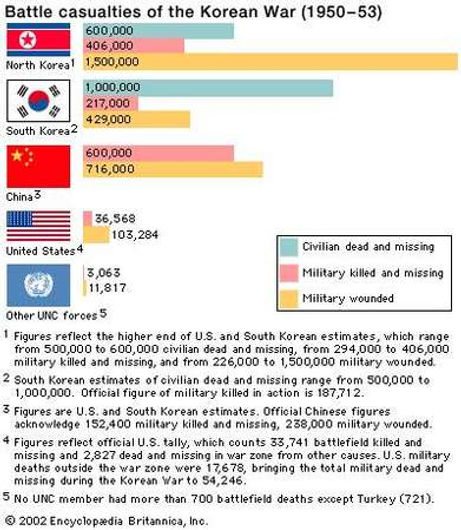
The South Koreans were backed up by the United States and United Nations. Meanwhile, the North Koreans were supplied and advised by the Soviet Union, as well as reinforced by the People's Republic of China.
The war ended largely in a stalemate, with little to no changes to the border between North and South Korea. More than 2.5 million civilians died at the end of the war.
The war ended only as an armistice, hence even until today, the war has not officially ended. Negotiations in 1954 produced no further agreement, and the front line has been accepted as the de facto border, turning into the Demilitarized zone we know of today.
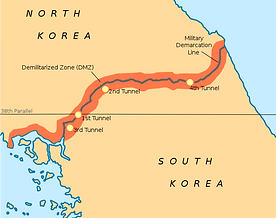
Start of the Korean War
The roots of the Korean War went back to the end of the second world war and the collapse of the Empire of The Rising Sun(Japan) Unlike China, Manchuria and other western colonies seized by Japan during WW2, Korea had been part of the Japanese Empire since 1910 and did not have a proper government after hostilities seized.
Hence, those that came to claim for the power over Korea largely came from China, Manchuria, the USA and the USSR. Those that came to claim power fell into 2 broad categories. The first was made up of committed Marxist revolutionaries who had fought the Japanese as part of the Chinese-dominated guerrilla armies in Manchuria and China. The other Korean nationalist movement, no less revolutionary, drew its inspiration from the best of science, education, and industrialism in Europe, Japan, and America.
In the process of a rushed effort to try and quell the remnants of the Imperial Japanese Army, as well as to repatriate the Japanese population in Korea, the USA and USSR agreed in August 1945 to divide the country for administrative purposes at the 38th parallel (latitude 38° N). This border is similar to today's North-South Korean Border.
The Soviets soon began a short-lived reign of terror over North Korea and this resulted in millions of terrorists fleeing South. The 2 sides had conflicting views on how they could reunify Korea. The US President Harry S. Truman try to Persuade the United Nations to assume responsibility over the country.
though the U.S. military remained nominally in control of the South until 1948.
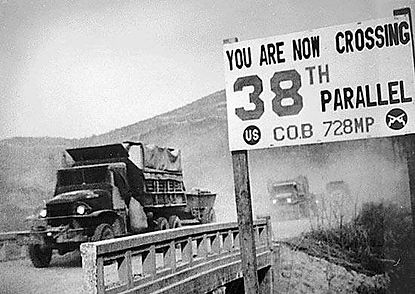
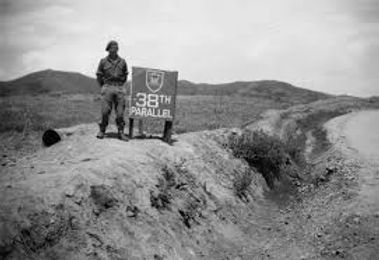
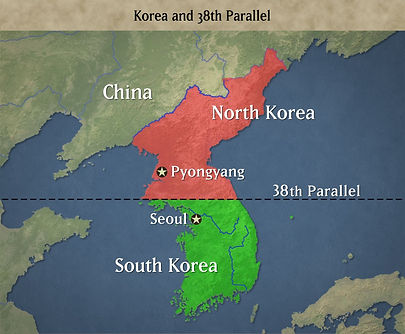
In early 1948, plans for an independent South Korea began to surface, despite opposition from communists in the South. Those who were against this began partisan warfare in Korean Provinces near the 38th parallel. The fighting then escalated to a border war between the Republic of Korea Army(ROKA) and the Korea People's Army(KPA). The North then launched a series of guerilla campaigns to draw ROKA forces away from other guerrilla suppression tasks further south
Nevertheless, the uprising failed, as the Republic of Korea was formed in August 1948, with Syngman Rhee as president. In this series of small clashes, more than 30 000 people died.
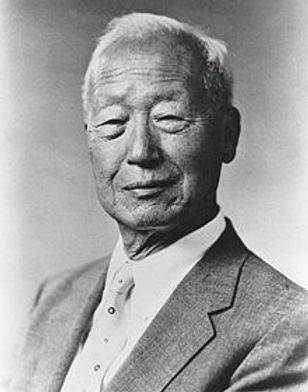
Syngman Rhee
The invasion
In early 1949 Kim Il-sung pressed his case with Soviet leader Joseph Stalin that the time had come for a conventional invasion of the South. Stalin refused, concerned about the relative unpreparedness of the North Korean armed forces and about possible U.S. involvement. In the course of the next year, the communist leadership built the KPA into a formidable offensive force modeled after a Soviet mechanized army. The Chinese released Korean veterans from the People’s Liberation Army, while the Soviets provided armaments. By 1950 the North Koreans enjoyed substantial advantages over the South in every category of equipment. After another Kim visit to Moscow in March–April 1950, Stalin approved an invasion.
In the predawn hours of June 25, the North Koreans struck across the 38th parallel behind a thunderous artillery barrage. The principal offensive, conducted by the KPA I Corps (53,000 men), drove across the Imjin River toward Seoul. The II Corps (54,000 soldiers) attacked along two widely separated axes, one through the cities of Ch’unch’ŏn and Inje to Hongch’ŏn and the other down the east coast road toward Kangnŭng. The KPA entered Seoul in the afternoon of June 28, but the North Koreans did not accomplish their goal of a quick surrender by the Rhee government and the disintegration of the South Korean army. Instead, remnants of the Seoul-area ROKA forces formed a defensive line south of the Han River, and on the east coast road, ROKA units gave ground in good order. Still, if the South was to stave off collapse, it would need help—from the U.S. armed forces.

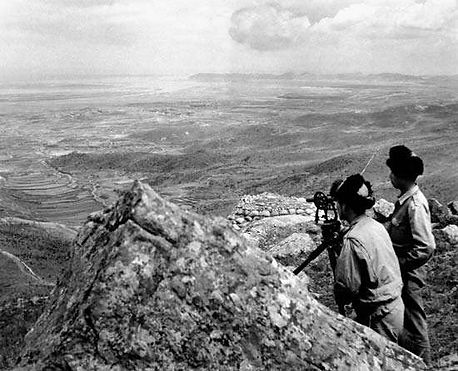
The North Koreans immediately got the upper hand. The North Korean army was well-disciplined, well-trained and well-equipped; The American forces, by contrast, were frightened, confused, and seemed inclined to flee the battlefield at any provocation. Also, it was one of the hottest and driest summers on record, and desperately thirsty American soldiers were often forced to drink water from rice paddies that had been fertilized with human waste. As a result, dangerous intestinal diseases and other illnesses were a constant threat.
It was not until the first weeks of August that the United Nations Command, or UNC, as MacArthur’s theatre forces had been redesignated, started to slow the North Koreans. It could be said that they were saved by the Port of Pusan, which was the only way supplies could come in for the allies. To stop the North Koreans’ tanks and supporting artillery and infantry, Sherman and Pershing medium tanks, rocket launchers, artillery pieces, antiaircraft guns, and, most important of all, close-air-support aircraft were brought in. The Fifth Air Force attacked forward units of the KPA with World War II-era P-51Mustangs, new jet-powered F-80s and F-84s, and even B-26 and B-29 bombers. Nonetheless, the North Koreans were successful in pushing the South forces all the way to the Pusan line.
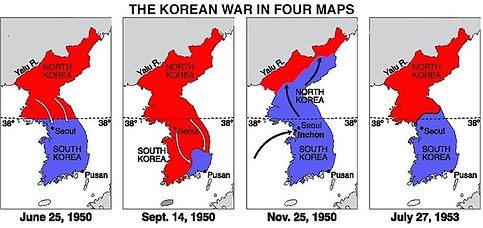
At around this time, Macarthur, the leader in charge of the US army in Korea, begin to consider the prospect of an amphibious invasion someone on the coast of Korea. Macarthur felt he wouldn't be able to win this war without an amphibious operation. It was finally decided that the operation will take place on Inch'On. On September 14, a massive aerial and naval bombardment of the port began, and on the next day, Marines began to land on Inch'On itself. At about the same time UN and South Korean forces began to advance from Pusan. Within weeks, the North Koreans were driven past their original border and Seoul was liberated.
But UN forces did not stop there. There continued to press on the attack, and by October 1950, UN forces had reached the border with China.

The Chinese started to worry about protecting themselves from what they called “armed aggression against Chinese territory.”
At around the same time, Chinese Communist Party Chairman Mao Zedong received a plea for direct military aid from Kim Il-sung. The chairman was willing to intervene, but he needed assurances of Soviet air power. Stalin promised to extend China’s air defenses (manned by Soviets) to a corridor above the Yalu, thus protecting air bases in Manchuria and hydroelectric plants on the river, and he also promised new Soviet weapons and armaments factories.
After much debate, Mao ordered the Renmin Zhiyuanjun, or Chinese People’s Volunteers Force (CPVF), to cross into Korea. It was commanded by General Peng Dehuai, a veteran of 20 years of war against the Chinese Nationalists and the Japanese. He also warned the United States to keep away from the Yalu boundary unless it wanted a full-scale war.
The Chinese then launched a blistering assault, armed with modern tanks and planes provided by the Soviet Union. By January 1951, the Chinese had pushed the UN forces back past the 38th Parallel.
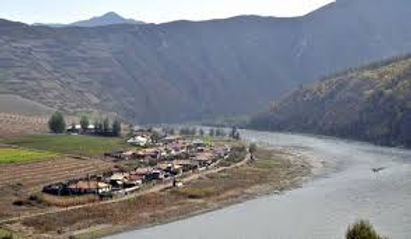
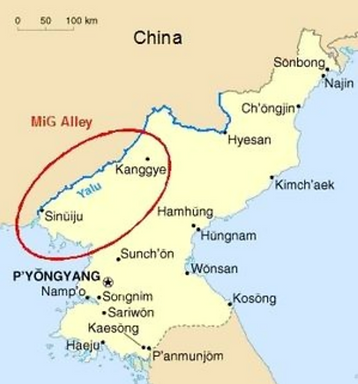
At this point, President Truman and Macarthur fell out. Macarthur wanted to carry on the war and invade China and even use nuclear weapons if necessary. However, Truman was content with just saving Sout Korea. Other UN allies had also persuaded Truman that attacking a China and starting a war was too much of a risk. Hence, an attack on China was ruled out.
Macarthur however, blatantly ignored UN instruction and threatened an attack on China. He was eventually sacked.
The end of the war - Treaties and Armistice
The fighting reached a stalemate around the 38th parallel around the middle of 1951. Peace talks began between North and South Korea, although the fighting would not stop until 2 years later.
President Eisenhower replaces President Truman in 1952, who wanted to end the war. Stalin's death I 1953 reduced the confidence of the Chinese and the Soviet Union. An armistice was signed in July 1953. The borders remained relatively unchanged.